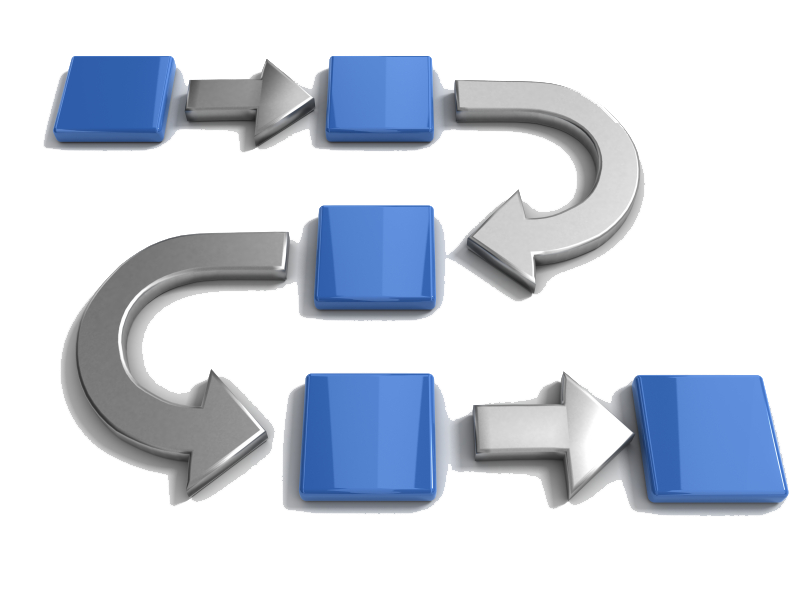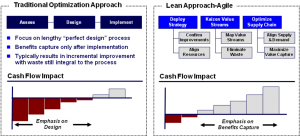Lean and Agile Capabilities
Organizations that want to achieve substantially superior business results apply Lean principles to drive revenue production and optimize cost models. Actionable Strategies pragmatically applies the Lean principles proven in the Toyota Production System as well as selected tools from Six Sigma. Breakthrough results have been achieved across process optimization and product development projects.
 Our Lean methodology has been proven in manufacturing and applied in a variety of services industries. Best applied at the strategic level, Lean delivers demonstrable and durable results. Actionable Strategies is pragmatic in the application of Lean and Agile techniques. The scope and depth depends upon the client’s posture towards and ability to absorb change.
Our Lean methodology has been proven in manufacturing and applied in a variety of services industries. Best applied at the strategic level, Lean delivers demonstrable and durable results. Actionable Strategies is pragmatic in the application of Lean and Agile techniques. The scope and depth depends upon the client’s posture towards and ability to absorb change.
 Lean Focus
Lean Focus
Organizations that want to achieve substantially superior business results apply Lean principles to drive revenue production and optimize cost models. Actionable Strategies pragmatically applies the Lean principles proven in the Toyota Production System as well as selected tools from Six Sigma.
Range of Services
All Lean services target and deliver specific ROI and range in horizon from strategic to tactical.
Typical Benefits
 Lean targets specific business benefits without regard to implementation constraints such as the following.
Lean targets specific business benefits without regard to implementation constraints such as the following.
- Removes waste for performance gains that do not tie up capital
- Dramatically compresses new product introduction cycle
- Accelerates order-to-cash realization
- Increases service delivery or production efficiency and customer service performance
- Migrating Lean upstream improves supplier efficiencies with lower delivered costs
Engagement Structure
By focusing on early benefits capture, iterative projects deliver successive returns that yield early ROI. As benefits realization accelerates, focus turns to the large value chain. The resulting optimized supply chain is a result of driving both internal supply chain efficiencies and driving change in external vendors.
Initial planning is “light and tight” and results in actionable work streams from the onset.
For specific details on how we can help you realize benefits that are immediate but paradoxically sustainable, please contact your Account Manager.
Accelerating product strategy and development is critical to competitive and growing organizations. Lean product development directly addresses challenges by applying Lean and Agile principles from concept to market adoption. Actionable Strategies has applied this methodology for clients in a variety of industries to move quickly from ideation to launch.

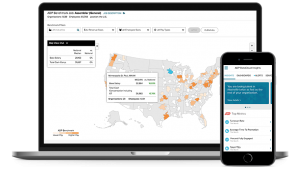 The client is a Fortune 500 company and provider of business process outsourcing and human capital management solutions. The company has revenues of $12B from 700,000 clients in 112 countries.
The client is a Fortune 500 company and provider of business process outsourcing and human capital management solutions. The company has revenues of $12B from 700,000 clients in 112 countries.
After conducting a strategic competitive analysis, Actionable Strategies was subsequently tasked with defining a product strategy for delivering products that provide predictive analytics. The client then asked us to build the initial product which won “Top HR Product” in HR Executive Magazine.
 Product Strategy
Product Strategy
To remain competitive with new entrants into the market, the company wanted to provide more advanced capabilities as part of their current product sets. Our competitive analysis and market research demonstrated a willingness to pay for advanced analytical capabilities. We utilized our Lean Product Development approach for the project lifecycle.
Product Development
Actionable Strategies worked with the client to identify predictive measures and other meaningful analytics and turn them into product offerings.
- Predict turnover in different parts of the business and determine potential actions
- Show how business measures of costs and revenue loss related to human capital factors such as attrition and overtime
- Align compensation with market measures including by geography
- Provide flexible views of workforce demographics
- Recruit effectively by providing insight into compensation and other metrics
- Analyze turnover, tenure, retention and other key indicators across different views of the business
Software Development
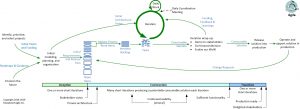 Essentially, Disciplined Agile Delivery was followed. Keys to success and other takeaways include:
Essentially, Disciplined Agile Delivery was followed. Keys to success and other takeaways include:
- Actionable Strategies conducted market research and competitive analysis to determine potential projects.
- New work items (stories) were added as part of the Lean Product Development process described above.
- The architecture served JSON objects to the browser, but used sample data until the middle tier could be built to transform cleansed production data.
- Evolving the WoW (way of working) involved reducing the iteration length to 1 week with the Chinese development team working late at night to collaborate with U.S. product stakeholders.
- The infrastructure evolved with all data and servers eventually moved into a Tier 1 production data center.
Results
Actionable Strategies collaborated closely with business and marketing leaders to conceive and build the product.
- The initial prototypes were well received by key customers, when previewed at trade shows, and to the press
- After formally launching the product, the client received the “Top HR Product” award by HR Executive Magazine
- The client immediately realized sales and testimonial customers from the enterprise segment of their business
- Actionable Strategies fully transitioned the Agile software development operation to the client IT organization when it was ready, from story cards to automated testing
- The client continued to extend the capabilities of the product into the mid-market segment, which is the most profitable area of their business
Today the client has a broad product offering and has elevated data delivery and analytics capabilities in their product and services mix.
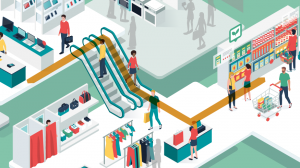 The client is one of the largest retailers in the U.S. with over 300,000 employees working in roughly 2,400 stores. Revenues have grown steadily to over $68 billion. eCommerce and B2B are a growing components of the marketing mix.
The client is one of the largest retailers in the U.S. with over 300,000 employees working in roughly 2,400 stores. Revenues have grown steadily to over $68 billion. eCommerce and B2B are a growing components of the marketing mix.
Reverse logistics (returns) became a growing part of the clients operations and it was postulated that there was an attendant growth in shrinkage (theft). Consultants applied Lean and Six Sigma tools to evaluate the process and produce measurements.
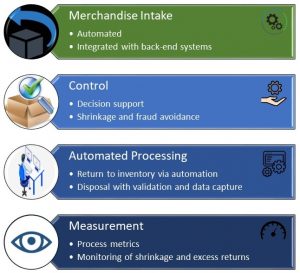 The solution involved a combination of process improvement and automation.
The solution involved a combination of process improvement and automation.
1. Define a Lean process that eliminated waste in a straight-through process
2. Automate the intake of merchandise
3. Implement controls to reduce shrinkage
The client was able to implement an efficient process which improved the experience for their customers. Shrinkage in the Reverse Logistics process was dramatically reduced.
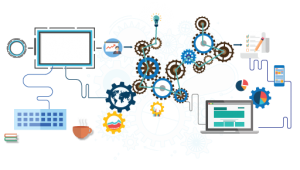 One of the 50 largest financial planning firms, the client is rated a top firm by Worth Magazine. As the firm grew, many manual processes became unwieldy and costly. Applying Lean principles, Actionable Strategies automated processes to ingest trading and charitable donation data, process it into usable tax information and feed it into the tax software platform. The client realized an ongoing reduction in processing time, costs and error rates.
One of the 50 largest financial planning firms, the client is rated a top firm by Worth Magazine. As the firm grew, many manual processes became unwieldy and costly. Applying Lean principles, Actionable Strategies automated processes to ingest trading and charitable donation data, process it into usable tax information and feed it into the tax software platform. The client realized an ongoing reduction in processing time, costs and error rates.
Detailed Client Profile
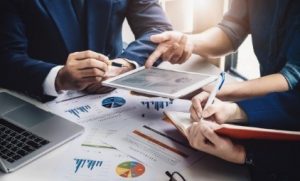 The client is a leading independently managed wealth management firm in New York City. They have been providing comprehensive wealth management services to their clients for over 25 years. As an independent, registered investment advisor, the firm provides sophisticated planning, investment management and highly integrated tax strategies. These services are highly personalized and serve high net worth individuals and families, as well as business owners, executives and entrepreneurs looking to grow their wealth.
The client is a leading independently managed wealth management firm in New York City. They have been providing comprehensive wealth management services to their clients for over 25 years. As an independent, registered investment advisor, the firm provides sophisticated planning, investment management and highly integrated tax strategies. These services are highly personalized and serve high net worth individuals and families, as well as business owners, executives and entrepreneurs looking to grow their wealth.
The client has been recognized as one of the Top Financial Advisory firms in America by Worth magazine and Medical Economics. Investment News called the firm one of the 50 Largest Financial Planning firms and Financial Advisor named them a Leading RIA firm.
Business Challenge
 As the firm continued to grow, many of the manual processes became unwieldy and costly. As part of the range of advisory services delivered to their clients, the firm provided tax planning. This included a broad set of activities including return preparation, filings and accounting for charitable donations. Many of the activities required to provide these services were manual, requiring data entry and checking by experts on staff. While costly, these manual efforts still resulted in errors in generating tax returns.
As the firm continued to grow, many of the manual processes became unwieldy and costly. As part of the range of advisory services delivered to their clients, the firm provided tax planning. This included a broad set of activities including return preparation, filings and accounting for charitable donations. Many of the activities required to provide these services were manual, requiring data entry and checking by experts on staff. While costly, these manual efforts still resulted in errors in generating tax returns.
The firm sought to reduce the significant cost, time and effort required to manually process trades and other transactions for tax preparation.
Solution Approach
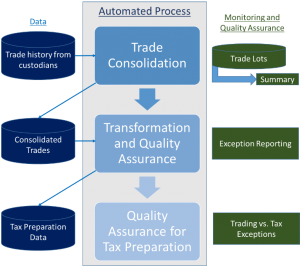 Actionable Strategies provided specific expertise to design and develop an automated process to turn raw trading and financial transactions into tax information. Experience with Lean process, data analytics and application integration allowed Actionable Strategies to rapidly deliver a solution that:
Actionable Strategies provided specific expertise to design and develop an automated process to turn raw trading and financial transactions into tax information. Experience with Lean process, data analytics and application integration allowed Actionable Strategies to rapidly deliver a solution that:
- Extracts stock, bond and other trades as well as other financial activity from custodians who hold the assets on behalf of the client
- Consolidates trading and other data into tax lots by types of assets and transaction type
- Transforms consolidated trading data into tax information for loading into the tax system
- Identifies the source of any discrepancies
Business Results
The automated process delivered ongoing benefits.
- Eliminated cost from personnel entering data
- Reduced the time to determine tax liabilities and prepare returns for filing
- Eliminated quality issues from data errors
- Reduced oversight requirements from senior management
- Enabled the Lean, straight-through process to operate in future years, even with data and technology changes

Agile software development approaches provide organizations with realizable benefits that are applied in the financial services community every day. By understanding the underlying principles, agile practitioners can better collaborate with business leaders who place decisions into a financial context. This article provides real-world examples of agile practices that provide three financially oriented benefits:
- Efficient use of capital
- Creation of exercisable options, which can also be thought of in terms of liquidity
- Risk management and control
The article was published in the Cutter IT Journal, Vol. 20, No. 10
 Measuring product development can be very imprecise without the proper approach and techniques. In addition to the traditional difficulty of measuring software development productivity, the myriad of factors related to differing cultures, environments and processes must be normalized to provide meaningful measures. Actionable Strategies applies practical experience in measurement systems and modeling to create a sustainable metrics framework that can be applied across a diverse enterprise.
Measuring product development can be very imprecise without the proper approach and techniques. In addition to the traditional difficulty of measuring software development productivity, the myriad of factors related to differing cultures, environments and processes must be normalized to provide meaningful measures. Actionable Strategies applies practical experience in measurement systems and modeling to create a sustainable metrics framework that can be applied across a diverse enterprise.
 Organizations apply metrics to achieve leaner development organizations.
Organizations apply metrics to achieve leaner development organizations.
- Better metrics provide a foundation for decision making such as global locations, centers of excellence and process improvement
- Application of lean approaches yields business results such as increased throughput and alignment, resulting in an optimized cost structure
- Governance and operating models with low bureaucracy
- Metrics and quantifiable targets without rigidity
Measurement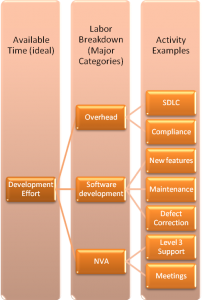
In addition to raw throughput measures, the many factors affecting productivity are gathered. In the sample chart shown here, effort is broken down by actual product / software development and other activities that are performed. This is one of the methods for rationalizing differences in development organizations such as SDLCs, security models and compliance.
The identification of non-value add activities (work that does not directly produce software) as well as overhead may produce opportunities for process optimization and are a critical part of this exercise.
Model Construction
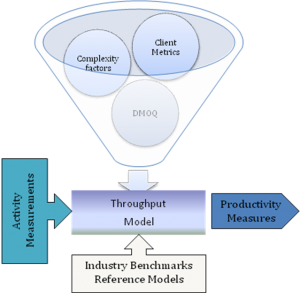 By applying proven models and techniques, combined with client specific measures, an accurate model unique to the client is constructed. Verification against the pilot and later re-calibration against a larger footprint of the organization ensures that the model remains accurate and adaptable as the firm evolves.
By applying proven models and techniques, combined with client specific measures, an accurate model unique to the client is constructed. Verification against the pilot and later re-calibration against a larger footprint of the organization ensures that the model remains accurate and adaptable as the firm evolves.
Actionable Strategies’ modeling experience provides practical guidance in such key areas as rationalizing feature and software delivery, incorporation of models such as COCOMO and building political consensus.
Engagement Structure
An iterative approach to modeling and measurement is applied by starting with a pilot phase. This structure enables clients to assume ownership of ongoing activities and reduce total project cost.
 In this presentation to the Project Management Institute, CEO Jeffrey Wu discusses techniques to deploy Agile across a large enterprise. He advocates pragmatic approaches based on personal successes and the challenges faced. It is focused on enterprise level transformation and not the deployment of low-level tools and practices.
In this presentation to the Project Management Institute, CEO Jeffrey Wu discusses techniques to deploy Agile across a large enterprise. He advocates pragmatic approaches based on personal successes and the challenges faced. It is focused on enterprise level transformation and not the deployment of low-level tools and practices.
The presentation contains practical advice on how to overcome constraints and internal resistance. It also includes feedback from other technology executives who underwent similar transformation.
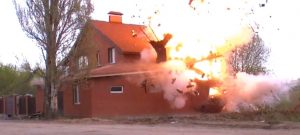 This white paper was published to help organizations identify candidates for Agile practices. It was written early in the adoption cycle of Agile and the fundamental principles remain true today.
This white paper was published to help organizations identify candidates for Agile practices. It was written early in the adoption cycle of Agile and the fundamental principles remain true today.
Several destructive behaviors are identified based on years of practical experience. They demonstrate that stakeholders are desperate for better performance in the delivery and quality of software. These include the “feature game”, business DIY, and treating development as a vendor rather than a business partner.
The paper concludes with practical advice to introduce agile practices into the organization.

